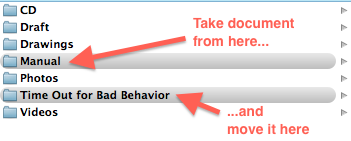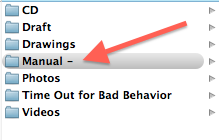Put Your Book Documents on a Time-Out for Bad Behavior
Most of my work is creating and editing long documents. Each project has 20-50 separate chapters (.indd files), all of which are organized into a book file (.indb). Each book totals several hundred pages, with hundreds of graphics and cross-references. Each document in the book may be cross referenced twenty times to other documents in the book. And InDesign, trying to be helpful, likes to make sure that all these connections are A-OK before letting me edit the document.
So if I open a document with cross-references to ten other documents in the book, guess what happens? InDesign must first open and check each of those ten documents. Now I’ll admit that I need a faster computer, but regardless, this process takes awhile. So I spend a lot of time waiting. And I hate waiting?
To compound the problem, each document is set up as a single text flow. So if content gets added on page 3, everything following will get pushed down to make room for the new content. To this InDesign responds, “But wait! The page numbers may have changed! The cross references need to be updated! Let me check everything again!” And so I wait some more?
Today I remembered a trick I wrote about a couple of years ago: Making InDesign Absolute Links behave like Relative Links. It allows me to duplicate a project (all 50+ books) and still keep the internal link structure intact. It basically involves intentionally breaking all the links to the parent folder by changing the folder name.
So I got to thinking, “If I can break the links to the parent folder, surely I can temporarily break the links all the other documents.” If InDesign can’t find links the first time it checks, it shrugs its shoulders and lets me continue working in peace.
So I took one of my chapters and placed it in its own folder:
Then, to make sure that the document can’t find all the other documents in the book (and waste my time trying to relink everything), I change the name of the parent folder. Like so:
Now, I open up the document I moved to the Time Out folder. After clicking through a series of warnings…
?I can now edit my document without InDesign checking all the links and cross-references every time I click inside of a text frame! Once I’m done editing, I simply correct the name of the original parent folder, and move the document back to reside alongside all its siblings.
Sweet, sweet productivity!










In windows, the combo “ctrl+alt+del and the kill of process” normally (and the restart of InDesign) normally make the work. I have this problem in a book that I an working with dropbox – it always tries to fix the references and crashes the load of the file.
InDesign should get up to speed again as soon as you simply open all InDesign documents to which/from which cross references are existent. What actually slows InDesign down is opening documents in the background (in order to check cross-references).
(Anyway, you shouldn’t have open more than approx. 50 documents – this is from my personal experience, working with a well-equipped Win-7 Prof. 64-bit machine.)
– Rudi
Use DTP Tools’ Cross Ref Pro, so much better!
Keep in mind that many plug-ins – so does Cross Ref Pro most likely – add special additional data to your InDesign documents. Consequence: if someone opens the document without the plug-in loaded, a warning message appears, the document opens in [Converted] mode and can only be saved in “Save As” mode.
In addition to this, you can’t output an InDesign book if you haven’t loaded the plug-in.
Some plug-in developers give away “Reader” modules for their plug-ins, however, the person who shall deal with your documents has to download, install and afterwards de-install this Reader plug-in. With all consequences and pains.
– Rudi
@Rogério InDesign eventually finishes processing, and I can work again, so I don’t actually need to force quit the process.
@Rudi: I will try opening all the documents at once to see if that works. Thanks for the suggestion! And thanks for sharing about the Converted mode. I have recently had some documents which I knew to be CS6 documents, but sometimes they opened as Converted and forced me to do a Save As. It had me baffled…
@Rudi and @Kelly: Those converted docs (due to not having a plug-in) can then exhibit weird behavior. I had a client who used eXtyles, which I don’t have, and I’ve never had so many crashes — not to mention the inability to add the docs to a Book file. You can imagine the fun in creating the 12-chapter PDF and overall TOC without Book features.
I’d heard that exporting as .idml and reopening and resaving would clear the memory of the plug-in. While this may be true, much necessary page formatting was lost in the export process, so it wasn’t a viable solution.
Wouldn’t deactivating Preflight temporarily effect the same? The constant checking when you click something is actually only due to this feature.